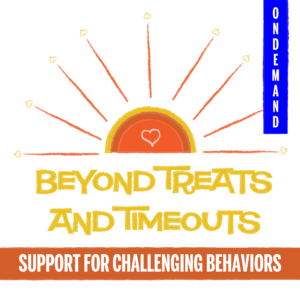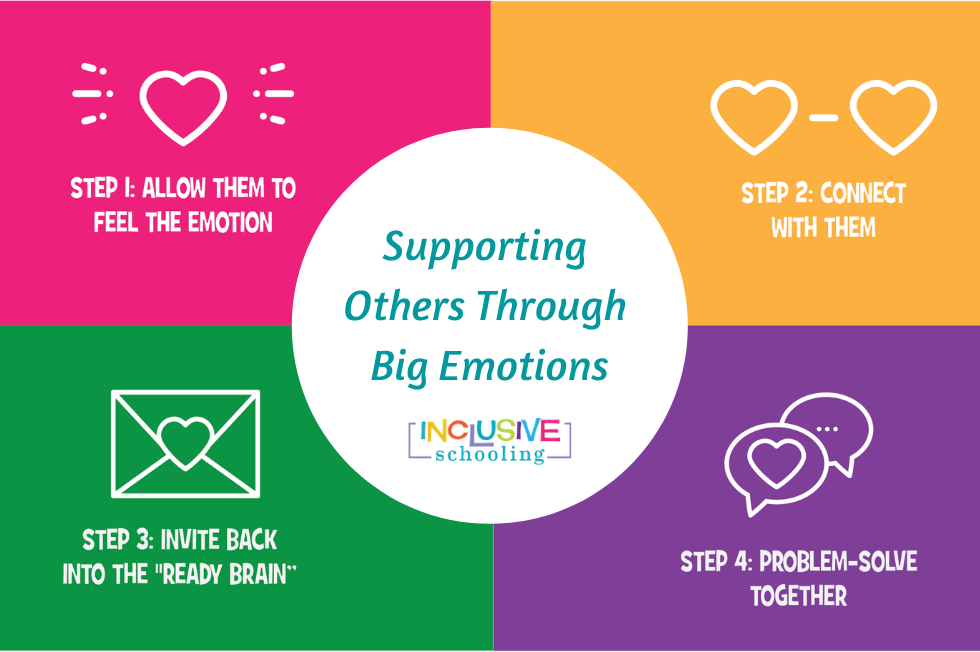Ever feel like it’s easier to have compassion and express empathy when a preschooler has a meltdown, but lose your ever-loving mind when a teenager does? Do you ever feel more understanding when your 6 year old loses it, than you colleague?
The good news is… there are effective ways to support anyone, at any age, who is having a big emotion. Which is good news! Because now more than ever, administrators and teachers are sharing that their older students, and even adult staff, are struggling with big emotions!
Follow these four steps to build your confidence and ability to show compassion when responding to and supporting teenagers, adolescents, and even adults when they are experiencing big emotions like anxiety, anger, and apathy.
Step 1: Allow them to feel the emotion
- Think – How can I help them feel safe so they can express their emotions?
- Feel compassion for the person behind the behavior
- Act – Hold space for them to process the emotion
- Key is to not rush to fix, move past, alleviate suffering, or give advice (yet)
Step 2: Connect with them
- Think – What am I communicating (verbally and/or non-verbally)?
- Feel empathy for the person behind the behavior
- Act – Validate their feelings and perspectives
- Key is to ensure they feel seen
Step 3: Invite back into the “ready brain”
- Think – How can I offer a lifeline? How can I offer my calm? How can I co-regulate?
- Feel generous and patient – If they aren't ready…go back to step 1
- Act – Soothe their system by triggering the positive emotional attractor, offering a variety of “lifelines”, encourage them to utilize coping strategies, and offer choices
- Key is to soothe their system enough to get them back into the “ready brain state”
Step 4: Problem-solve together
- Think – How do I trigger the positive emotional attractor to help them feel secure enough to problem-solve?
- Feel open-hearted and curious about possibilities and solutions
- Act – Use Inclusive Schooling’s 5 Minute Problem Solving Technique
- Key is to help them re-engage (i.e., to continue, to repair, to move on)
NOTE: Although this is a step-wise process, it is possible you will need to return to previous steps repeatedly until the person is able to move forward. It is ok to go backwards in the steps; however, don’t skip over steps. It’s very common to want to jump to step 4 (problem-solve), but you cannot experience success until steps 1, 2 and 3 have been completed.
View Recording from Live Broadcast Below
Need more PD Like this in your school?

This is a four-part on demand series for PreK-12th grade special and general education teachers, related service professionals, paraprofessionals, educational leaders, coaches, and inclusion facilitators ready for a different approach to behaviors that are challenging.
RETURN TO TOP ^

